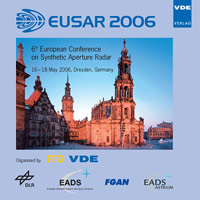Enhancing the Classification Robustness using Consecutive Range Doppler Maps in SAR Target Recognition
Konferenz: EUSAR 2006 - 6th European Conference on Synthetic Aperture Radar
16.05.2006 - 18.05.2006 in Dresden, Germany
Tagungsband: EUSAR 2006
Seiten: 4Sprache: EnglischTyp: PDF
Persönliche VDE-Mitglieder erhalten auf diesen Artikel 10% Rabatt
Autoren:
Schimpf, Hartmut (FGAN Forschungsinstitut für Hochfrequenzphysik und Radartechnik (FHR), GERMANY)
Inhalt:
While the antenna footprint passes over a ground scenario, the continuous data stream is split into packages that undergo Doppler processing to achieve cross-range resolution. The outcome is a series of consecutive Range Doppler Maps. For a reconnaissance drone or a seeker that makes use of the SAR/DBS principle, it is a natural thing to use consecutive RDMs instead of projected ground maps. The main reasons are that the automatic target recognition (ATR) algorithm should work in real time, and that the requirements for motion compensation are less stringent. A rural scenario containing an array of 17 objects (tanks, trucks, decoys) was measured under different headings at 35GHz. Based on these data, different versions of the “evolving mean” approach are analysed to enhance the target classification robustness.


